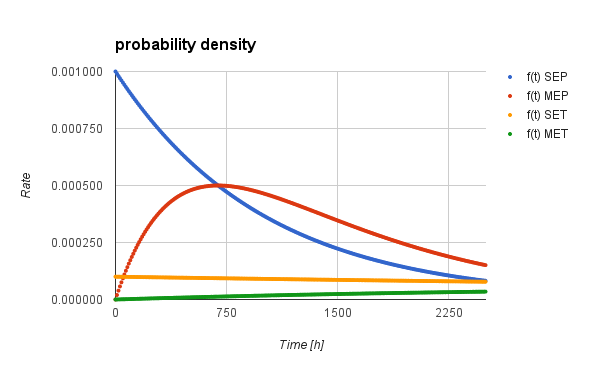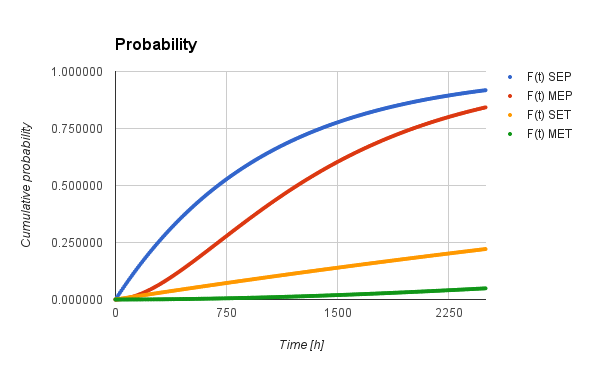I suspect there is a wide variation in engine reliability, according to
Then you have fuel issues (fuel quality, fuel icing, induction/fuel servo icing) which will stop all your engines at more or less the same time and I would suggest there are not uncommon. I met a pilot a few years ago who got a total stoppage at ~FL250 over the N Sea, in the middle of nowhere, presumably due to fuel icing. The engines restarted around 2000ft above the sea. He sold the plane immediately and bought a King Air  The only engine issues I have ever had were prob99.9 fuel servo icing.
The only engine issues I have ever had were prob99.9 fuel servo icing.
Lately, you are getting quite obsessed with that fuel servo icing notion, aren’t you? 
Lately, you are getting quite obsessed with that fuel servo icing notion, aren’t you?
Not at all. I think an engine stoppage at regular intervals, preferably over hostile terrain or the sea, is good for one’s attitude to risk. I know of one pilot (a homebuilder) who installed a hidden switch which fakes an alternator failure and I was considering doing the same thing, but more random 
In fact I knew a bloke I was at university with who had a hidden switch on his car’s fuel pump. It worked very well for him, though with a “different objective” 
Cost has to be a huge factor. If you look at most piston twins, it’s the cost of flying two of the single engine version of the aircraft in formation cost wise but with less payload. For example, a Baron is only trivially faster than a Bonanza, uses twice as much fuel, costs twice as much at annual, and even things like landing fees are twice as much. You might as well own two Bonanzas, so you have a spare one if one of them’s down for maintenance! And if you need to take more stuff, just have a friend fly the other Bonanza in formation with you. The economics really just don’t work out for the traditional twin.
The only twin I would consider is a Piper Apache, with the original nose and tail, painted with a 1950s style livery (and only on N-reg) because I think they have some kind of graceful beauty and are really quite nice to fly. I did my multiengine rating in one, and it was like flying a TriPacer with two engines (and not really much faster). Sadly, I can’t afford to run one.
It is said that in the event of an engine failure in an Apache the purpose of the remaining engine is to carry you to the crash site.
A friend of mine did twin ratings on a Miles Gemini. He tells me that in this type your single engine committal height is also the height at which you will do your next circuit
Anyway, my personal experience differs from the numbers you quote by several orders of magnitude. In 2000hrs of MEP flying I have had three engine failures which means one every 700 hours.
That may very well be more correct. I just picked 50,000 because I have seen it floating around somewhere. This is engine failure in flight though, and that is double for a twin.
Anyway, I suddenly remembered (with the help of Google  ) what I was looking for regarding dual redundancy which also explains why a single turbine may be a better option than a twin piston. For simplicity (and maybe also more correct) let’s assume MTBF for a piston is 1000 h and a turbine is 10,000 h.
) what I was looking for regarding dual redundancy which also explains why a single turbine may be a better option than a twin piston. For simplicity (and maybe also more correct) let’s assume MTBF for a piston is 1000 h and a turbine is 10,000 h.
For a single system the failure rate is 1/MTBF, so it is 1/1000h for a single piston and 1/10,000h for a single turbine. But what is the MTBF for a dual redundant system? Obviously the failure rate must be larger than the possibility that both engines quit at the same time (which is ridiculously small) because the possibility of one engine quitting is doubled, but it also must be smaller than that of a single engine. As it happens, the MTBF of a dual redundant system is simply 3/2 * 1/failure rate, which is rather counter intuitive, but a fact.
MTBF (twin piston) = 3/2 * 1000 = 1500 h
MTBF (twin turbine) = 3/2 * 10,000 = 15,000 h
Obviously a turbine is much better than a twin piston, but that is not the whole truth. The probability density functions for dual redundancy and single systems are very different.
Single system: f(t) = r*e^(-r*t)
Dual redundant system: f(t) = 2*r(e^(-r*t) – e^(-2*r*t))
Plotting these curves gives the following graph:

The probability of a failure in the next unit of time is given in the next graph.

Given a MTBF of 1000 h for a piston engine, only before the first 200 h or so will the twin be significantly more reliable, even though it has dual redundancy. After 1500 h there is not much “power” left in the redundancy because the MTBF is so short. A longer MTBF is much better than dual redundancy.
This is very simplistic. Only random errors, no change despite having found an error in one unit etc, but it shows the relative small effect of redundancy when the reliability of the component is small. I would believe the MTBF of a piston is much longer than 1000h, but maybe it isn’t?
Great analysis, LeSving.
I think the MTBF of a Lyco/Conti piston engine (I mean a catastrophic failure; not a fuel issue which is in the category of “can always recreate this if the conditions are right”) cannot possibly be as low as 1k hrs because if it was, most pilots who reach say 2k hrs in their flying life would experience a catastrophic engine failure. And that is clearly not the case.
Well, not on certified engines. I have read some postings from microlight pilots who said that with some of the engines historically used in that field, you should expect them to break every 200hrs or so. But this didn’t bother them because they in VMC and very slowly so a forced landing was just a hassle.
One can calculate MTBF from actual data and I had this done in my business for a particular product, and the answer came to 600 years.
A lot of this stuff is counter-intuitive because the MTBF of a human is about 800 years.
I recall one argument in favour of twins being that engine failures in cruise are almost never reported, whereas in singles they are almost always reported. That argument can cut both ways however because it could be used to argue that engine failures in twins are are lot more common that people think. There is certainly a lot of anecdotal stuff around to support that, in the form of forum postings from pilots who have had loads of them.
Also, who collects the data? It is not going to be the AAIB, BEA, etc for twins enroute, because the owner doesn’t have to tell anybody. The engine maker should know more but in the Lyco/Conti world the repairs/overhauls are done mostly without reference to the factory (arguably an excellent system) and there is no central data collection.
Basically, I think the MTBF must be much nearer to 50k hrs than 1k or 2k hrs.
For me weight is sometimes a factor. With the Azrec you can install six adults and full fuel and not think about the weight. That is carrying capacity that you cant find in almost any single and it is still kind of fun to organise a golfing trip for four chaps (almost certainly all going to be above the FAA typical man) and tell them not to worry about the clubs, electric carts etc and yes you can bring back a crate of wine each.
Then there is stability; a twin gives a kinder ride and a load of stability on approach.
and of course as you get older the extra engine is nice, if not for any rational reason.
and how many singles have boots?
I would believe the MTBF of a piston is much longer than 1000h, but maybe it isn’t?
If the “F” stands for “any failure” then it must be shorter than 1000h. If it stands for “catastrophic failure” then it must be much longer (with exception of those early two-stroke Rotax engines used in microlights that Peter mentions).
But all those statistics don’t tell the most important part of the story: In a twin, a single engine failure is almost a non-event with proper training and pilot currency. So a pilot can experience almost any number of them without being personally affected.
Without turning this into yet another boring single vs twin debate, the fact is that there is no reliable data to support the old “singles are as safe as twins” trope. Peter Collins was wrong, because the data he based it on is flawed. 95% of twin engine troubles, in my guess, never gets reported or even ends in an emergency. Certainly true for my engine troubles – I continued to my destination.
Piston twins are having a hard time, but as a seller of one, almost every guy who comes to look at mine it is stepping up from a single. And you know what they all say? “I have a 210/Bonanza/Mooney/Skylane/whatever, but recently I flew back with my family on a trip at night and I started hearing the engine run a little rough (or sound different). It was pitch black below and we were in IMC…”. That’s all it takes. Every single piston guy that ever hears that will think about a twin real fast. So, this ensures that there will always be some market for them.